ESVI: Earth Science on Volcanic Islands
2021 Mentors
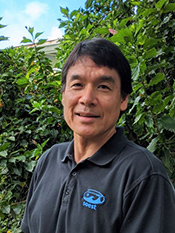
Garrett Apuzen-ItoResearch InterestsI use a variety of geophysical techniques to study the architecture and mechanics of the crust and tectonic plates. Students who work with me have strengths in math and physics and are interested computer data analysis and visualization. Seafloor spreading at mid-ocean ridges takes on a huge diversity of shapes and forms owing to the complex interactions of faulting and magmatism. For example, in the eastern Pacific, robust magmatism creates long straight ridges separated by transform faults, whereas in northern Atlantic, weak magmatism leads short segments of spreading with huge fault blocks. Potential ProjectsI invite an REU student to work with me and my post-doc to examine digital topography at mid-ocean ridges. We will address how differences in magma supply alter the style of faulting, the form of spreading segments, and the ways in which segments are offset. For additional information, please refer to my Potential REU Projects. |
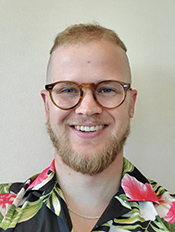
Sloan CoatsResearch InterestsThe term Common Era refers to the last ~2000 years, but it also has a scientific connotation, as this is the era common to paleoclimate reconstructions, observational data, and simulations from state-of-the-art climate models. I leverage these disparate sources of climate information to better understand variability on decadal and longer timescales—things like “megadroughts” over southwestern North America and trends in tropical Pacific sea surface temperatures. My work typically involves the development and implementation of novel statistical methods, including machine learning, as well as the use of climate modelling—particularly with the National Center for Atmospheric Research models. Potential Project
|
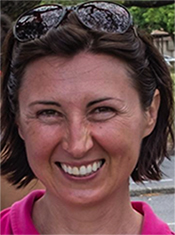
Henrietta DulaiResearch InterestsHawaiian aquifers have great influence on the water quality of streams and the coastal ocean. Groundwater feeds streams and also discharges to the coastal ocean in the form of submarine groundwater discharge (SGD), thereby strongly influencing the water quality in near-shore waters. I am interested in natural and anthropogenic effects including sea-level rise, climate change, and pollution on SGD and coastal ecosystems. For example, one common problem on Pacific Islands is a high density of cesspools along the shoreline and streams, which leak wastewater into the groundwater aquifer. What many people don’t realize when taking medication is that drugs get excreted and end up in our wastewater and leak into streams, groundwater, and reefs. These medications affect aquatic organisms and may end up in our drinking water. Studies in Hawai‘i have shown the presence of pharmaceuticals in the coastal ocean and streams but more studies are needed to better understand the distribution of these constituents in the wild. Potential Projects
|
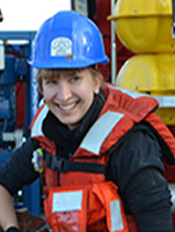
Helen JaniszewskiResearch InterestsCurrently, one of my primary areas of research is exploring techniques to seismically image the mid-to-deep crustal magmatic structure beneath volcanoes. This has traditionally been a difficult region to constrain with geophysical and geochemical techniques, and represents a missing piece of our understanding of global volcanic processes. More complete constraints on the deeper crustal system beneath volcanoes can help to inform models of magma transport and recharge in eruptive cycles as well as help understand links with tectonic environment. I typically work with students that have a strong interest in physics, math, and computer programming, and students can expect to learn about seismic data availability and processing, seismic crustal imaging techniques, an overview of tectonic and volcanic processes, and make use of MATLAB programming. Potential ProjectReceiver function studies are an infrequently used technique to image the deep crustal structure beneath volcanoes, despite some successes. The intern will investigate existing data at volcanoes globally to assess the ability of local monitoring networks to be used for deep crustal imaging targets. Depending on the outcome and student interests, possible directions could include detailed seismic imaging at a single volcanic system, comparison of first order structures amongst or between different tectonic settings (i.e. rift, arc, hot spot), or assessment of imaging quality based on network configuration. |
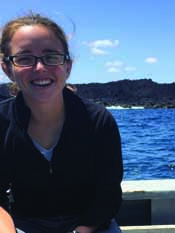
Meghan JonesResearch InterestsI am a postdoctoral researcher working on the development and long-term sustainability of the Generic Mapping Tools, or GMT. In addition to developing open-source tools for Earth Science, my research interests span submarine and subaerial magmatic and volcanic processes, interactions between volcanic eruptions and broader Earth system processes, and remote sensing applications. Potential Project
|
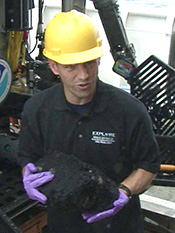
Jasper KonterResearch InterestsMy research interests are in mantle geochemistry, and processes that shape oceanic volcanoes. The majority of my work focuses on the use of radiogenic (Pb, Sr, Nd, Hf) and stable (Fe) isotopes, as well as major and trace element abundances to look at the sources and processes that form volcanic rocks. In particular, I work on volcanic chains that occur in the middle of the tectonic plates (so-called hotspots), studying how the volcanoes are constructed and shaped over time, how they relate to the tectonic plates, and how they relate to the world-famous example of the Hawaiian Islands. Potential ProjectsSamoan volcanoes are some of the largest hotspot volcanoes in the Pacific Ocean, surpassed in volume only by some of the Hawaiian Islands. Due to explosive volcanism near sealevel, these types of hotspot volcanoes are thought to include a weak zone, between the predominant submarine pillow lavas and subaerial lava flows that can result in volcanic flank failure. This may cause tsunamigenic catastrophic debris avalanches or gradual slumps. Recently collected submarine data from off-shore Samoa will allow us to investigate the styles of volcanic flank failure in Samoa. |
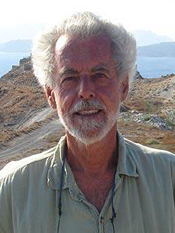
Floyd McCoyResearch InterestsMy current research interests include the Late Bronze Age eruption of Thera (Santorini, Greece), the paleoclimate of the Eastern Mediterranean, sedimentology of tsunami deposits (Greece, Italy, Turkey, and Hawaii), surveys of the Aegean and Mediterranean sea floor, production of hyaloclastites at Hawaii, and Hawaiian geoarchaeological and geophysical surveys. Potential Project
|
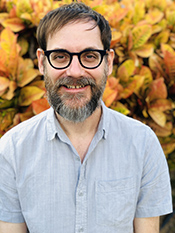
Aaron PietruszkaResearch InterestsI study the magmatic evolution of Kīlauea Volcano in space and time using measurements of lava chemistry. Currently, I am trying to decipher the causes of the spectacular and destructive eruption on Kīlauea's lower East Rift Zone in 2018. Potential ProjectsThe student will help to determine the origin of the highly differentiated lavas from the 2018 Kīlauea eruption, which represent the “coolest” (i.e., lowest temperature) magma known to have erupted at this volcano. This research will use computer modeling of the major and trace element abundances of these unusual lava samples. If possible, the student will also perform their own measurements of the Pb, Sr, and Nd isotope ratios of the lava samples in our Isotope Chemistry and Mass Spectrometry Laboratory at the University of Hawaiʻi to further constrain the origin of this mysterious magma. |
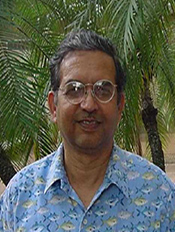
Shiv SharmaResearch InterestsMy research interests are in the fields of micro- and remote Raman spectroscopy of synthetic and natural materials including silicate glasses, minerals and biogenic minerals, and ices relevant to planetary exploration of the Moon, Mars, Venus and Europa. My Laboratory also have developed instrumentation for standoff Raman, fluorescence and laser-induced breakdown spectroscopy, and more recently underwater standoff Raman system. Details are available here. Potential Projects
|
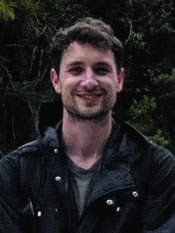
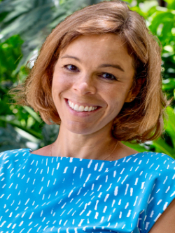
Team Mentors: Kyle Murray and Bridget Smith-KonterResearch InterestsOur research involves the use of data-driven approaches and numerical modeling to study how the Earth's shallow crust deforms over time. Using satellite-based methods (InSAR and GPS) we are able to characterize processes such as interseismic activity on faults, inflation/deflation of volcanoes, or subsidence related to extraction of groundwater. These types of studies are useful for working towards better forecasting of natural hazards, or can offer a new perspective on the management of groundwater resources. This work is computationally intensive and involves primarily coding, data processing, and statistical analysis. Potential Projects
|
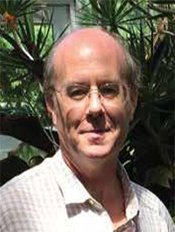
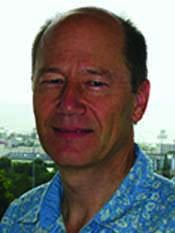
Team Mentors: James Potemra and Bruce HoweResearch InterestsOur group uses direct measurements of ocean properties, such as temperature, sea level, waves, etc. to better understand ocean dynamics. This research has two broad foci: one involves the role of the ocean in the Earth's climate, the other is directed at providing data and products to the public. Through collaborations with the Oceanography Department, Ocean Resources Engineering and the Center for Microbial Oceanography, a series of measurements are routinely collected at Station ALOHA, a region roughly 100 miles north of Oahu. Here we maintain a sea-floor observatory called ACO. This provides real-time information about the deep ocean, including video, sounds, and various physical properties. We also conduct monthly cruises to Station ALOHA as part of the Hawaii Ocean Time-series (HOT) program. During these 5-day expeditions, a wide range of measurements are made, and various samples are taken and then processed back on campus. Finally, the third component at Station ALOHA is a “ocean reference site”, a surface mooring (buoy), that measures atmospheric conditions (wind speed, rainfall, etc.) and subsurface ocean quantities. All of these measurements provide us with relatively long-term time-series that can provide insights to how the ocean environment is changing, and the analyses may help better understand climate change. A second area where ocean observations are collected and used is within a program called the Pacific Islands Ocean Observing System (PacIOOS). This effort is aimed at providing real-time and forecast information to a wide range of ocean users, including coastal managers, planners, tourists, surfers, and so on. PacIOOS maintains observations in all the American Affiliated Pacific islands including Hawai‘i. We have a wide array of coastal measurements and numerical models, and then try to provide these data via web-based services. Potential Projects
|
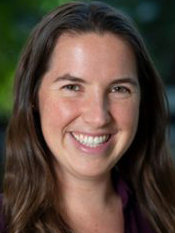
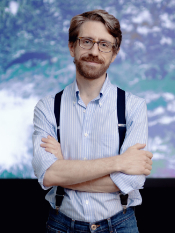
Team Mentors: Alison Nugent and Giuseppe TorriResearch InterestsCumulus clouds represent one of the most intriguing phenomena in the Earth’s atmosphere. In recent decades, much progress has been made in our understanding of these systems, but there are still many open questions. This knowledge gap is one of the main contributing factors to the uncertainties of future climate projections. In our research, we use both numerical models and observational data to improve our understanding of the processes that govern the life of cumulus clouds, particularly in tropical areas like Hawaii. A better understanding of these processes will hopefully lead to an improvement of future climate predictions. Potential Projects
|
2017 Mentors | 2018 Mentors | 2019 Mentors | 2020 Mentors| 2021 Mentors | 2022 Mentors | 2024 Mentors | 2025 Mentors |
[ Top of page ]
